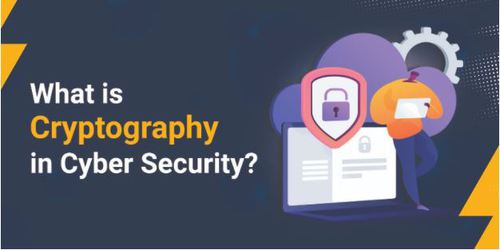Our systems are protected because of cybersecurity and encryption; nevertheless, specialists must make the system powerful so that it cannot be easily compromised by other users or harmful viruses. Hackers have indeed been able to breach even the most strong encryption over time.

Millions of people utilize technology in their everyday lives, and as a result, they store and send personal data on a regular basis. When devices and networks are not protected, they become exposed to scams, resulting in significant loss and a rise in cybercrime. Become a cyber warrior by earning Cyber Security certifications online.
One of the ways to combat cybercrime is to improve cybersecurity. Systems will be more secure if businesses use cryptography as their cybersecurity tools. In this blog, let’s deep dive into various concepts of Cryptography.
What is Cryptography?
The study of encrypted communications systems that enable only the transmitter and intending receiver of communication to access its information is known as Cryptography
. The word “Kryptos” comes from the Greek word “Kryptos,” which signifies “hidden.”
The technique of turning regular plain language into incomprehensible text, and vice versa. It is a way of storing and sending data in a specific format and it may also be used for user authentication as well as protecting data from theft or tampering.
What is the History of Cryptography?
An inscription carved about 1900 BC in the chamber of the cave of the nobleman Khnumhotep II in Egypt was the first recorded proof of the use of encryption (in some form). In places, the scribe substituted uncommon hieroglyphic characters with more common ones.
Many regard Claude E. Shannon to be the founder of mathematical cryptography. Shannon studied at Bell Labs for several decades and wrote an article titled “A Mathematical Theory of cryptography” during that period.
The first form of encryption was simply penning a message (New World, 2007) because most individuals were unable to read. The word Cryptography is derived from the Greek words Kryptos and Graphein, which correspondingly mean concealed and writing (Pawlan, 1998).
What is the Objective of Cryptography?
The following four goals are addressed by modern cryptography:
Confidentiality: The most frequently addressed objective is confidentiality. The information is incomprehensible to anybody who was not supposed to get it.
Integrity: Integrity is the process of preserving and ensuring that data is correct and consistent. And the data is not altered during the entire process.
Non-repudiation: The creator/sender of any certain information cannot subsequently dispute the authenticity in creating or transmitting the information.
Authentication: the sender and receiver may verify each other’s identities as well as the information’s location.
What is Cryptography Algorithms?
Many types of cybersecurity systems rely on cryptography. Cryptography uses methods to scramble data bits in such a manner that only authorized users can unshuffle them and recover the original data. To accomplish successful juggling, cryptographic methods employ math.
Cryptosystems encode and decode data using a set of methods known as cryptographic algorithms, or ciphers, to provide secure communications between computer networks, devices, and software.
One algorithm is used for encryption, another one for message verification, and still another for key exchange in a cipher suite. Public and private keys are generated for data encoding and decoding, digital signature and validation for authentication scheme, and key exchange are all part of this process, which is integrated with procedures and implemented in software running on software applications and interconnected computer networks.
What are the Types of Cryptography?
Cryptography is classified into three types:
- Symmetric Key Cryptography: It is an encryption method in which the transmitter and receiver of a communication encode and decode messages using a single shared key. Symmetric Key Systems are quicker and easier to use, but they have the drawback of requiring the transmitter and recipient to swap keys in a safe way. Data Encryption Technology is the most widely used symmetric key encryption system.
- Asymmetric Key Cryptography: A key pair is often used to encode and decode data in this system. Encryption is done using a public key, while decoding is done with a private key. The terms “public key” and “private key” are not interchangeable. Even though everyone knows the public key, the message recipient can only decrypt it since he is the only one who knows its private key.
- Hash Functions: This algorithm does not make use of any keys. A value of hash with a defined length is computed based on text format, making it difficult to retrieve the plain message’s content. Hash functions are used by several software applications to encrypt information.
What are the Applications of Cryptography?
E-commerce, card payments, virtual money, password protection, and military communications are all examples of cryptography applications.
Conclusion
In the recent era, Cryptography is used to keep confidential information, such as secret passwords, safe on the internet. Cryptography is used by cybersecurity professionals to create algorithms, ciphers, and other safety measures that encode and safeguard corporate and consumer information. Cryptography will improve additional techniques to improve security standards of personal information in the coming years.